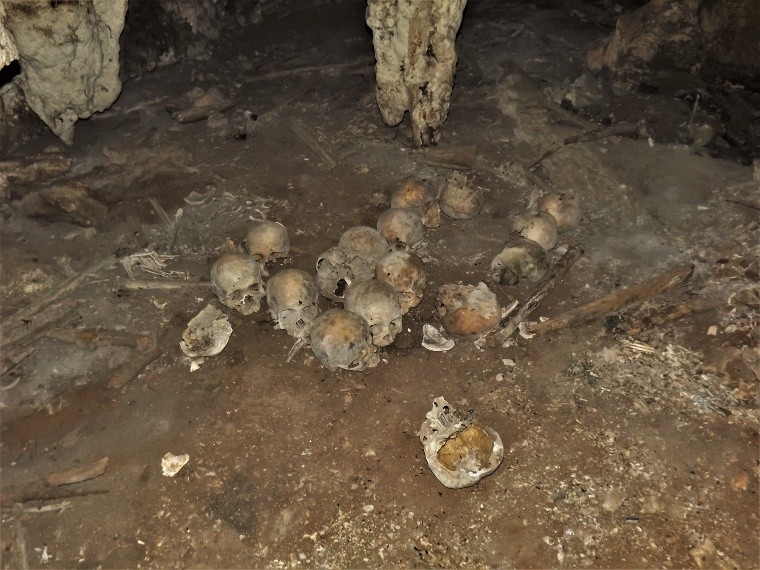A decade ago, a complaint alerted the Chiapas authorities about the presence of human remains in a cave in the town of Carrizal, in the municipality of Frontera Comalapa. Believing to be at the scene of a crime, the researchers collected the bone elements and began their analysis in Tuxtla Gutiérrez, and with the collaboration of the National Institute of Anthropology and History (INAH) it was possible to determine that the bones were pre-Hispanic.
Since then, analyzes have been carried out that allow INAH physical anthropologists to delve into a funerary context approximately a thousand years old and even theorize that there was an altar of skulls or tzompantli, in the Comalapa Cave.
In a virtual conference, the physical anthropologist Javier Montes de Paz, a researcher at the Center INAH Chiapasreleased the preliminary results of said investigation, in which it pointed out the factors that support such a hypothesis.
One of them, he said, is that, although they have identified long bones of femurstibias or rays, until now not a single complete burial has been recognized but mostly skulls or fragments of these, for which it is a context of numerous individuals who were decapitated.
“We still do not have the exact calculation of how many there are, since some are very fragmented, but so far we can talk about approximately 150 skulls,” said the specialist, providing a summary of the preventive conservation, cleaning and cataloging work applied in each one of them.

Photo: Courtesy INAH
The second factor by which Montes de Paz posits the existence of a tzompantli is the evidence of traces of aligned wooden sticks, according to the record raised in the cave at the time Attorney General of the State of Chiapasin 2012.
According to the physical anthropologist, the fact that the skulls from Comalapa do not have perforations in the parietal and temporal bones –like those of the Huei Tzompantli of Tenochtitlan–, is explained from the knowledge about altars that used structures to fix the skulls without drilling them.
“Many of these structures were made of wood, a material that disappeared over time and could have collapsed all the skulls,” he said.
Together with archaeologists from the INAH Chiapas Centerit has been established that the bone remains of the Comalapa cave have cranial modifications of the erect tabular type and that they date from the Early Postclassic (900 and 1200 AD).
“We have recognized the skeletal remains of three infants, but most of the bones are from adults and, until now, they are more from women than from men,” said the researcher, noting that a common characteristic of the skulls is that none of them preserves the teeth.
Although it has not yet been established whether the teeth were extracted in life or postmortem, experts recognize precedents of this type in Chiapas: the Cueva de las Banquetas, explored in the 1980s by the INAH in the municipality of La Trinitaria, where 124 skulls that did not preserve teeth were recovered.
Another case is the Tapesco del Diablo cave, discovered in 1993 by Mexican and French explorers in the municipality of Ocozocoautla. Five skulls were discovered there with the particularity of having been placed on a wooden tapesco (grid).
The physical anthropologist Javier Montes de Paz emphasized the need to continue with the investigations in the complex, and even carry out new field seasons in the cave of Comalapa.
In this sense, he highlighted the responsibility that citizens must have to respect these spaces that were often used for rituals, and pointed out that irregular visits affect the archaeological heritage, sometimes irreversibly. “The call is that when people locate a context that is likely to be archaeological, they avoid intervening and notify the local authorities or the INAH directly,” he concluded.
rrg